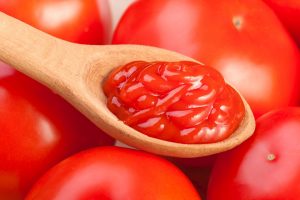
Ketchup, undoubtedly America’s favorite condiment, is actually poured on practically everything. Who does not know a ketchup addict who cannot get through one meal with no ketchup on something? Or perhaps you’re unabashedly one yourself.
The origin of the term ketchup is actually thought to be traced back to a Chinese word which may be loosely translated as kio-chiap or ke-tep. The predecessor to our ketchup was really a fermented fish sauce made out of fish entrails, meat byproducts as well as soybeans, generally ground into a paste. This combination not just added taste to food, but was not hard to save on long ocean voyages. As it spread along spice trade routes to Indonesia and also the Philippines, British traders got totally hooked on the spicy, salty taste. By the early 1700s, they took samples home to England and faster altered the first recipe.
Even though tomato plants have been released to England by way of South America during the 1500s, tomatoes were commonly thought to be dangerous, along with various other members of the nightshade family (potatoes and eggplants). The first use in England was captured in 1690 & spelled “catchup”; afterwards the spelling of “ketchup” appeared around 1711, as well as the modified spelling “catsup” in 1730.
A famine in Italy during the late 1830’s led the starving superstitious people to ultimately consider tomatoes, and the population was pleasantly surprised when no one became poisoned, resulting in the acceptance across Europe. The very first Italian tomato sauce recipe appeared shortly after the famine. Imagine Italian cooking without the tomato… impossible.
Tomato ketchup came out in America in the early 1800’s. An enterprising Philadelphia native named James Mease integrated the tomato into the recipe of his, setting off a revolution of tomato-based ketchup. By 1896, The brand new York Tribune believed that tomato ketchup had become America’s national condiment and also may be discovered “on every table in the land.” That may have been a bit of an exaggeration at the time, but definitely prophetic for the coming twentieth century, particularly with the launch of hot dogs at the 2 community fairs: Chicago and St Louis. Cooks and homemakers set about scrambling for ketchup recipes to make at home together with the increasing acceptance of bottled versions.
With a number of different variations of the condiment probably in the U.S., a Pittsburgh businessman called Henry J. Heinz began producing ketchup in 1876 making use of vinegar and tomatoes as his chief ingredients, and he quickly dominated the business market (and still does). By1905, the company had sold 5 million bottles of ketchup. The very first recipes Heinz tried contained cinnamon, mace, cayenne pepper, cloves, and allspice. A second included brown sugar, horseradish, celery salt, mustard seed, ginger, and pepper, along with the 2 main ingredients, vinegar and tomatoes. Eventually, the nation was hooked.
Americans currently purchase ten billion ounces of ketchup yearly, which comes out to more or less 3 bottles per person per year. The figure appears to be minimal but keep in your mind that Americans consume a lot of their ketchup outside the house, at restaurants as well as fast food spots.
So these days, when you shake that bottle or open that packet, be thankful that your beloved ketchup is actually free from entrails and fish heads… and the like.
